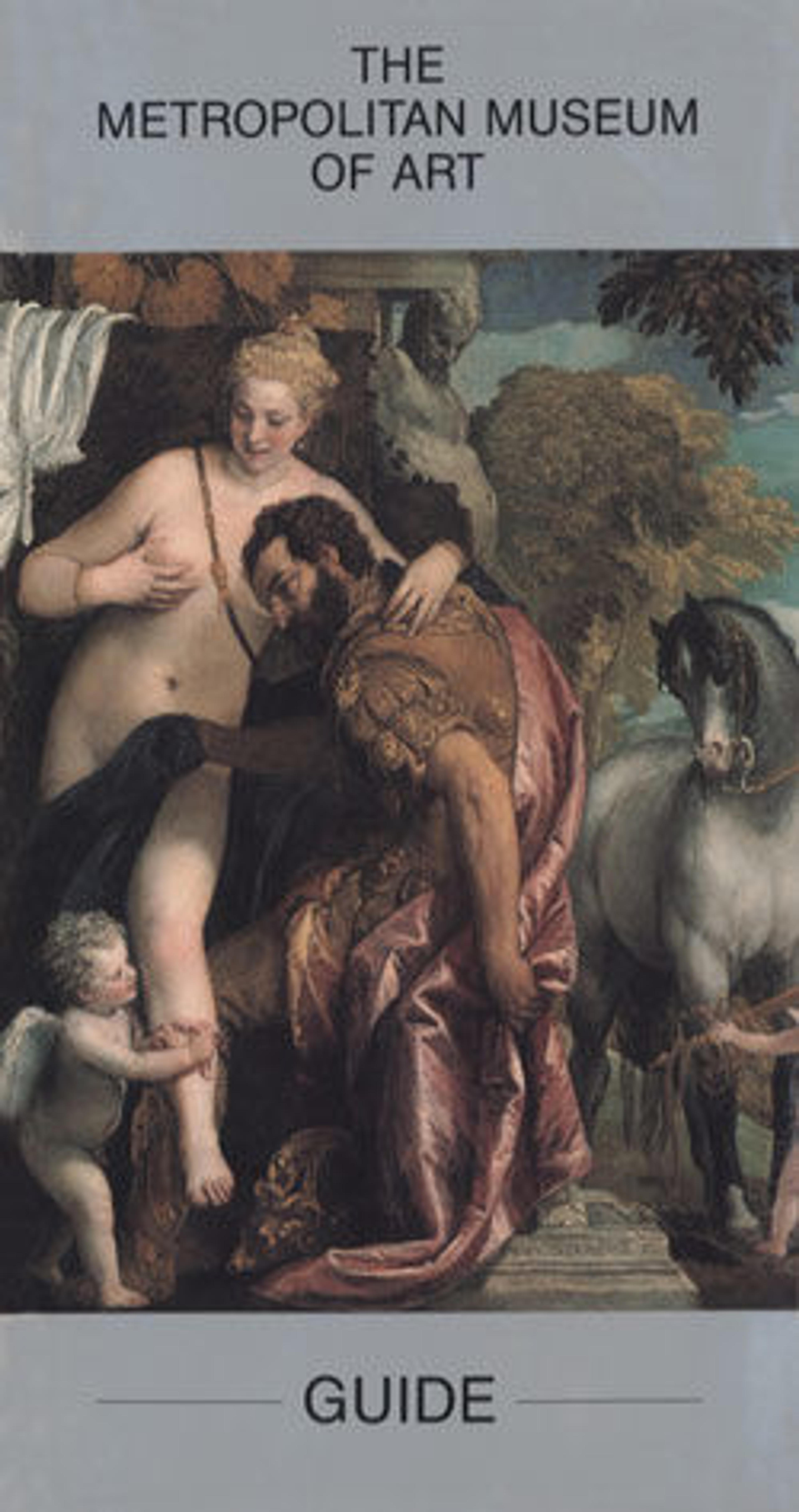Handle Depicting a Lion Subduing a Nubian
The image of a lion, which symbolizes the pharaoh, subjugating a Nubian, one of the traditional enemies of Egypt, is frequent in early Ramesside art, especially during the reign of Ramesses II. The usual rendition shows a bound Nubian kneeling before a lion that holds the back of the man's head in its jaws. Undoubtedly this protome shows the pose in an abbreviated form.
Two fly whisks with gilded lion heads were found in the tomb of Tutankhamun, and this protome may also have decorated a royal fly whisk or whip handle. The lion's hollow neck has two small holes allowing the piece to be doweled in place.
The piece has been dated to the reign of Ramesses II because there is no indication of lachrimal, or tear, lines beneath the lion's eyes, a common feature of late Dynasty 18 representations of felines that is often lacking in early Ramesside examples (see 35.1.23).
Two fly whisks with gilded lion heads were found in the tomb of Tutankhamun, and this protome may also have decorated a royal fly whisk or whip handle. The lion's hollow neck has two small holes allowing the piece to be doweled in place.
The piece has been dated to the reign of Ramesses II because there is no indication of lachrimal, or tear, lines beneath the lion's eyes, a common feature of late Dynasty 18 representations of felines that is often lacking in early Ramesside examples (see 35.1.23).
Artwork Details
- Title:Handle Depicting a Lion Subduing a Nubian
- Period:New Kingdom, Ramesside
- Dynasty:Dynasty 19
- Reign:reign of Ramesses II
- Date:ca. 1279–1213 B.C.
- Geography:Said to be from Eastern Delta, Qantir (Piramesse); From Egypt
- Medium:Egyptian blue, gold
- Dimensions:h. 3 cm (1 3/16 in); l. 4.3 cm (1 11/16 in); w. 3 cm ( 1 3/16 in)
- Credit Line:Gift of Norbert Schimmel Trust, 1989
- Object Number:1989.281.92
- Curatorial Department: Egyptian Art
More Artwork
Research Resources
The Met provides unparalleled resources for research and welcomes an international community of students and scholars. The Met's Open Access API is where creators and researchers can connect to the The Met collection. Open Access data and public domain images are available for unrestricted commercial and noncommercial use without permission or fee.
To request images under copyright and other restrictions, please use this Image Request form.
Feedback
We continue to research and examine historical and cultural context for objects in The Met collection. If you have comments or questions about this object record, please contact us using the form below. The Museum looks forward to receiving your comments.
